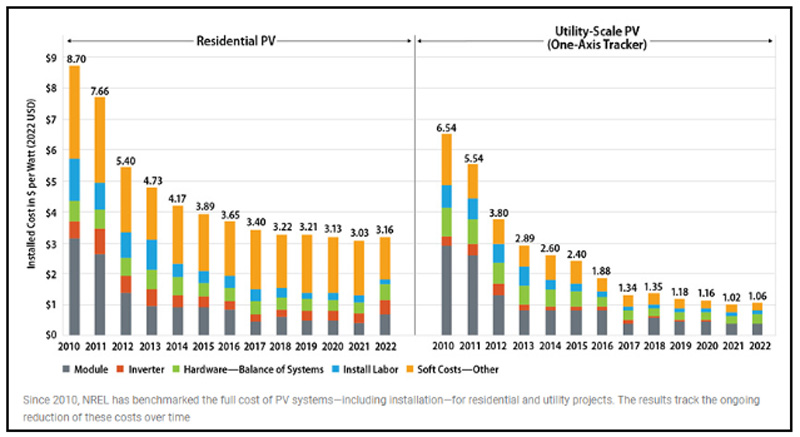Corporations, Falling Costs of DERs, and Federal Policy Drive U.S. Power Markets Toward Decentralization
Share this post:

History of Private Generation
Historically, manufacturing companies looking to reduce expenses have considered adding private generation at their sites to offset utility purchases. This practice, spanning several decades, has been particularly relevant to the escalating costs of electricity. The popularity of private generation surged in the 1980s and 1990s, catalyzed by the Public Utility Regulatory Policies Act of 1978 (PURPA). PURPA facilitated private or third-party generation in specific scenarios, even amidst state restrictions. The primary challenge, however, was the high installation costs of these private generators. Initially, only large industrial customers found it cost-effective to install private generators, as their scale and substantial order volumes justified incorporating an onsite energy team into their operations.
Falling Costs of Distributed Energy Resources (DERs)
Fast-forwarding to the present, the private generation landscape has undergone significant transformation, extending its reach beyond large industrial entities. Major corporations such as Amazon, Apple, and Google are now actively pursuing their private generation solutions. This shift is primarily attributed to the sharply declining costs of installing Distributed Energy Resources (DERs). Technological advancements and heightened market competition have been instrumental in reducing costs, enabling a wider range of companies, including smaller industrials, to explore private generation.
Additionally, the decline in DER costs is not the sole catalyst for this transition. Environmental, Social, and Governance (ESG) mandates from corporate stakeholders are equally influential. These mandates are steering companies towards sustainable and renewable energy sources, bolstering the adoption of DERs. Consequently, the energy generation landscape is becoming not only more accessible but also more attuned to global sustainability objectives.

Federal Policy Driving DER Adoption
The evolving federal policy in the United States is a significant driver for the adoption of DERs. The Federal Energy Regulatory Commission (FERC) has implemented several orders to encourage DER adoption. Among these, FERC Order 2222 emerges as a particularly impactful development. This order, set to be implemented this decade in multiple RTO/ISOs, enables commercial corporations and smaller industrial customers to participate in wholesale power markets with their DERs.
FERC Order 2222 democratizes the energy sector by allowing DERs to compete with traditional energy sources in the wholesale electricity market. This order opens up avenues for smaller entities to contribute to the grid, diversifying the energy mix and enhancing grid resilience. It represents not just a step, but a significant leap towards an inclusive and sustainable energy future.
Power Markets Becoming More Decentralized
Given these developments, the U.S. power markets are unmistakably trending towards decentralization. The amalgamation of falling DER costs, corporate sustainability initiatives, and forward-thinking federal policies like FERC Order 2222 is driving this shift. While centralized generation remains necessary, the rise of private and smaller-scale generation sources is leading to a more balanced and resilient energy system.
In this dynamic context, it's essential to understand that decentralization does not entail replacing centralized power systems. Rather, it denotes a synergistic coexistence where centralized and decentralized systems reinforce each other, ensuring a reliable and sustainable energy supply for the future. Moving forward, this balanced approach is poised to create a more robust, efficient, and environmentally friendly energy landscape.
The direction of the U.S. power markets is distinctly toward a more decentralized, inclusive, and sustainable energy future, propelled by technological innovation, corporate responsibility, and supportive federal policies.
written by:
Matt Alvarez
Director of Sales

